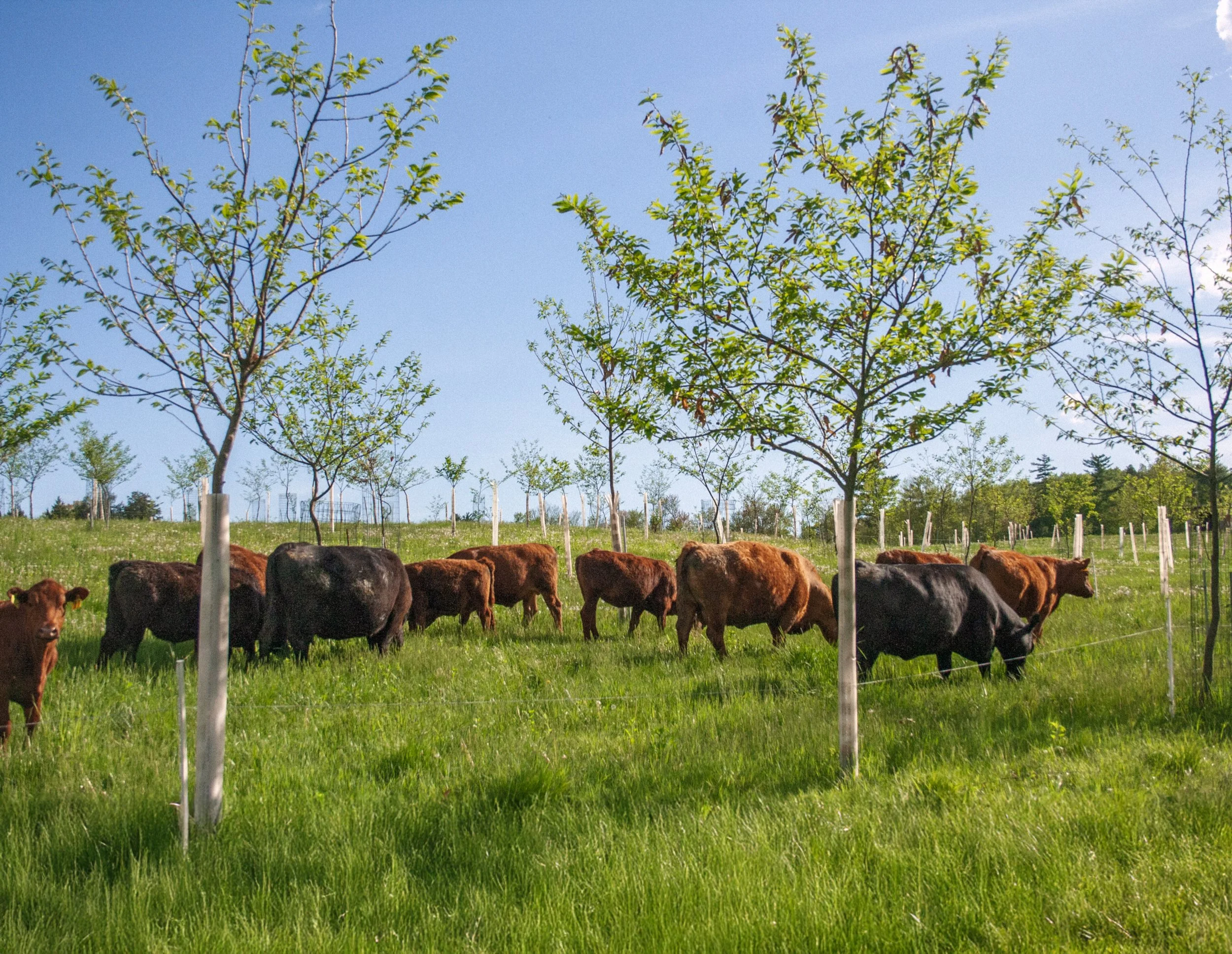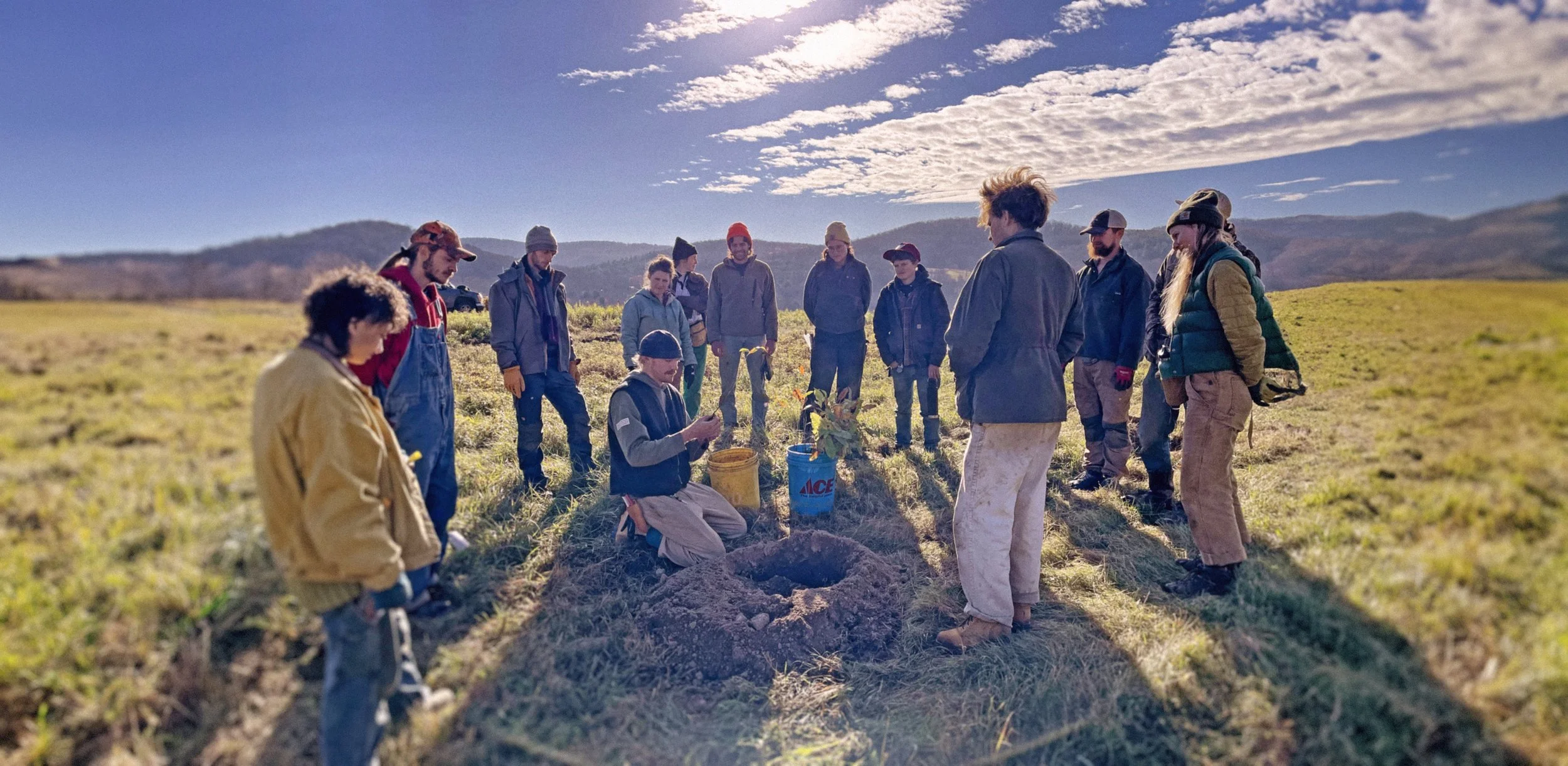What We Do
Stewarding Land
Breadtree farms on 800 acres in the Upper Hudson Valley (NY) and Southwest Vermont, where we steward 20,000+ food-producing trees and shrubs — including chestnut, hickory, oak, seaberry, apple, pear, mulberry, and persimmon — in orchards grazed by sheep and cattle. The practice of raising food crops, trees, and animals together has a long history in many cultures, and (today) is often called agroforestry. Our farms use certified-organic practices that:
+ Increase Soil Health
All over our country, hundreds of years of annual tillage have created soils that are compacted and depleted of important nutrients and biological diversity. Because growing food on trees doesn't require annual soil disturbance, our way of farming can produce a lot of food while stabilizing and creating healthy soil ecosystems. We subsoil to reverse historical soil compaction, and amend our soils with minerals, kelp, and both fungal and bacterial inoculants to rebalance deficiencies and restore the soil food web.
+ Cycle Fertility
Instead of relying on energy-intensive synthetic fertilizers, we graze animals rotationally on pasture between orchard rows. This practice (silvopasture) creates a symbiotic relationship between trees and animals, where the trees give shade (and in some cases, food) to the animals, and the animals fertilize the trees and pasture. Silvopasture mimics the natural movements of ruminant herds on grasslands, which can sequester carbon and improve soil health.
+ Manage Pests With Minimal Harm
Rather than manage pests with toxic chemicals, we use strategies that increase the diversity of our farm ecosystems. For example, to protect trees from rodents like voles and field mice (who girdle and kill young trees while nesting for winter), we build perches that help predatory birds roost and hunt in our fields, and set traps baited with peanut butter and baking soda — which disrupts rodent lifecycles without poisoning the birds who eat them. To protect trees against harmful beetles and caterpillars, we plant diverse pastures that create habitat for beneficial insects and birds who predate those pests.
+ Conserve Energy
We aim to strike a balance between hand labor (which minimizes our dependence on fossil fuels) and machine labor (which makes our work physically sustainable at a multi-hundred-acre-scale).
+ Build Habitat
We promote and enhance habitat for birds, caterpillars, and pollinators, while mowing and weeding as necessary to support trees during their first few years in the field. We seed and manage our pastures to enhance habitat structure and species diversity. We plant trees and shrubs at the edges of fields and waterways to enhance wildlife habitat and stabilize erosion-prone soils. Where appropriate, we build beaver-dam analogues to slow the flow of water and enhance riparian habitat.
+ Support A Healthy Climate
In addition to cleaning air and waterways, trees grow by absorbing carbon from the atmosphere and storing it in soil and vegetation. Replacing annual food production with perennial staple tree crops is one of the most effective strategies to counteract climate change.
Fields of the Future
Today, the Northeast produces a very small percentage of the food we consume. Every year, our region is home to fewer farmers producing fewer different kinds of food. Can our region learn to farm in ways that work for centuries, and leave a better place for future generations? Can our region learn to feed ourselves with food that grows here?
We envision a sustainable food system where agroforestry farms can meet many of our region’s most important needs while sequestering carbon, cleaning water, improving soil health, increasing biodiversity, and making equitable livelihoods for farmers. We see chestnuts as a keystone crop that can form the economic foundation of that food system, and enable a wide range of other perennial crops.
Breadtree and our partners are doing field research to develop, prove, and scale up a number of other important “new” perennial staple crops and agricultural systems. Today, some of these foods are unfamiliar to many Americans, but they all have long histories as important sources of food and medicine for many cultures throughout human history.
In 2025, our farms produce:
Lamb and beef raised on pasture
Honey
Maple syrup
While we are developing our own capacity to dry, shell, and mill chestnuts, we’re selling chestnut flour made by our friends in Ohio.
In coming years, our farms will produce:
Acorn flour (and maybe oil)
Seaberry juice (a “Northern citrus alternative”)
Apples (& apple products like juice, cider, vinegar, cider syrup)
Persimmons (& persimmon products like pulp & vinegar)
Mulberries (& mulberry products like raisins, molasses, flour)
Ginseng
Rot resistant polewood & lumber
Next-generation seed & nursery stock of many of the above species
Community of Growers
Breadtree would not exist without the generous culture of knowledge and resource sharing among past and present nut growers. We look forward to continuing that tradition by sharing our learnings, and supporting the next generation of orchardists, graziers, and agroforesters to build the skills, knowledge, and resources they need to build agroforestry enterprises and commit to long-term land stewardship.
We’re creating opportunities for people in our communities to learn how to plant and care for trees. Over 200 people have planted and tended orchards with us, and many have joined our online trainings focused on land assessment, farm design, and farm financial planning. We have also provided more than 1,000 hours of free technical support to 200+ current and interested farmers and agroforesters. If you are interested in learning more about growing chestnuts or working with commercial agroforestry systems, please reach out and join us for a planting or work event.
Building An Industry
Today, major bottlenecks limit the growth of a chestnut industry in the Northeast. With USDA support, Breadtree is working to address these pinch points, making it much less risky for other farmers to invest in growing chestnuts. Between 2024-2030, we plan to:
Conduct global research to learn from processing techniques and designs in mature chestnut-producing regions all over the world (France, Italy, Turkey, Korea, Japan).
Develop an organic chestnut processing facility at our home farm (on the border of Salem, NY and West Rupert, VT). The facility will be scaled to process about 2000 acres worth of chestnut production annually (~8x our current production), which would make it the largest of its kind in the U.S. This will enable farmers in the region to grow chestnuts with a secure path to market (either by using the facility to process nuts that they will retail themselves, or by wholesaling nuts through our sales co-op).
Develop new recipes and product formulations for Northeast chestnuts and chestnut flours, in collaboration with leading chefs and culinary institutions.
Start rebuilding chestnut culture in America by engaging chefs, restaurants, culinary publications, and food buyers to increase awareness and demand.
Foster better coordination in the regional chestnut supply chain, by providing technical support for new and aspiring farmers, and offering offtake/marketing/distribution services to existing farmers.




